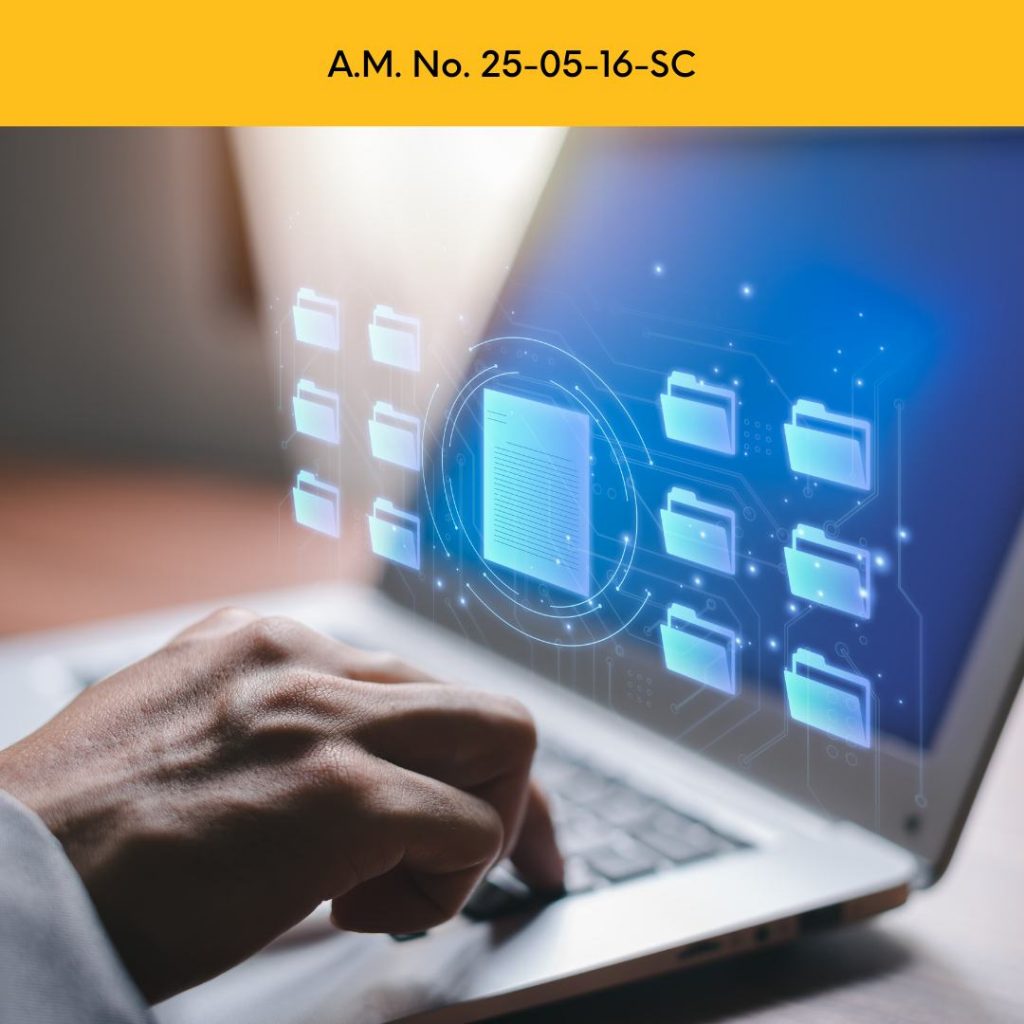
Published 4 July 2025, The Daily Tribune
The Supreme Court of the Philippines has once again embraced the promise of digital transformation. On 19 June 2025, it promulgated A.M. No. 25-05-16-SC, officially titled “Transition to Electronic Filing in the Supreme Court.” The issuance heralds a new chapter in judicial efficiency by mandating the use of electronic filing for select submissions beginning 1 July 2025.
The initiative is both timely and necessary. As our legal system adjusts to the realities of a post-pandemic, tech-driven world, the Supreme Court has chosen to take the lead in ensuring accessibility, speed, and environmental sustainability in its processes. What used to be a heavily paper-based process is now streamlined through the Philippine Judiciary Portal (PJP) or eCourt System.
The Court has identified the following types of pleadings as subject to mandatory electronic filing:
- Petitions for Review on Certiorari under Rule 45;
- Petitions under Rule 64 (covering judgments or final orders of the COMELEC and COA);
- Petitions for Certiorari, Prohibition, or Mandamus under Rule 65;
- Petitions for Contempt;
- Petitions for prerogative writs such as habeas corpus, amparo, habeas data, kalikasan, and continuing mandamus;
- Quo warranto petitions.
In addition, all pleadings due on or after 1 July 2025 in already docketed cases must likewise be filed electronically. This transition period, from 1 July to 30 September 2025, allows parties a window of adjustment. Errors in filing may still be corrected during this time. However, come 1 October 2025, non-compliance will have serious consequences. Erroneously filed pleadings will be considered as not filed—a costly oversight for any practitioner. Particularly for Rule 64 petitions, failure to comply may lead to outright dismissal or denial.
Not everything is subject to e-filing just yet. Exempted from the mandatory electronic filing requirement are the following:
- Appeals in criminal cases under Rule 122;
- Administrative complaints against personnel of the Supreme Court and Presidential Electoral Tribunal;
- Administrative matters involving the Court of Appeals, Sandiganbayan, CTA, and lower courts;
- Complaints against lawyers and bar matters;
- Electoral tribunal cases (Senate, House, and Presidential Electoral Tribunals), which remain governed by their own rules.
The Court has also tightened control over who may electronically file pleadings. Only members of the Philippine Bar are authorized to file electronically—and they must use their own valid accounts on the PJP or eCourt System. Proxy filing is strictly prohibited. Delegating this task to a non-lawyer or even another person is not only disallowed but may also result in disciplinary action. Lawyers who have not yet created their accounts may register at: https://portal.judiciary.gov.ph/Login.
Even with the shift to electronic filing, the service of pleadings and other submissions to opposing parties remains bound by the Rules of Court. These may still be done via personal service, registered mail, or private courier.
This initiative may very well be a harbinger of a future where court proceedings are conducted entirely online. From virtual hearings to remote submissions, the judiciary is slowly building the architecture for a fully electronic court system. While full digitalization may still be years away, the direction is unmistakable.
The High Court’s measured transition reflects not just adaptation but leadership. The Philippine legal profession must now follow suit—not just by learning how to use the system but by understanding the values that underpin the shift: efficiency and accountability.
For more of Dean Nilo Divina’s legal tidbits, please visit www.divinalaw.com. For comments and questions, please send an email to cad@divinalaw.com.

